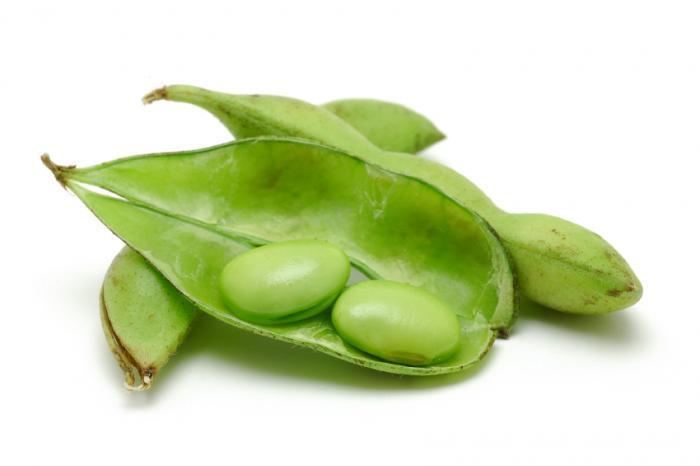 | ||
Similar Soybean, Tofu, Jiaozi, Miso, Wakame | ||
How to make delicious edamame beans
Edamame /ˌɛdəˈmɑːmeɪ/, or edamame bean, is a preparation of immature soybeans in the pod, found in the cuisine of China, Japan, Korea and Hawaii. The pods are boiled or steamed and served with salt. In Japan, it is usually blanched in 4% salt water and not served with salt. When the beans are outside the pod, the term mukimame is sometimes used.
Contents
- How to make delicious edamame beans
- How to cook edamame
- Name
- History
- Harvesting
- Cooking
- Storage
- Nutrient content
- References
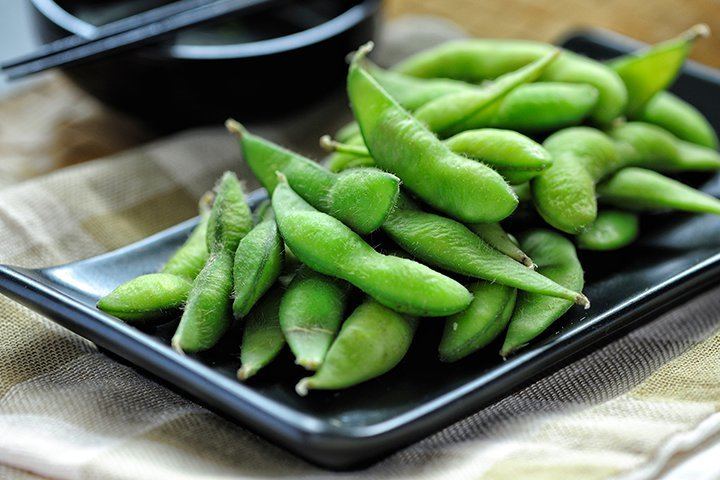
How to cook edamame
Name
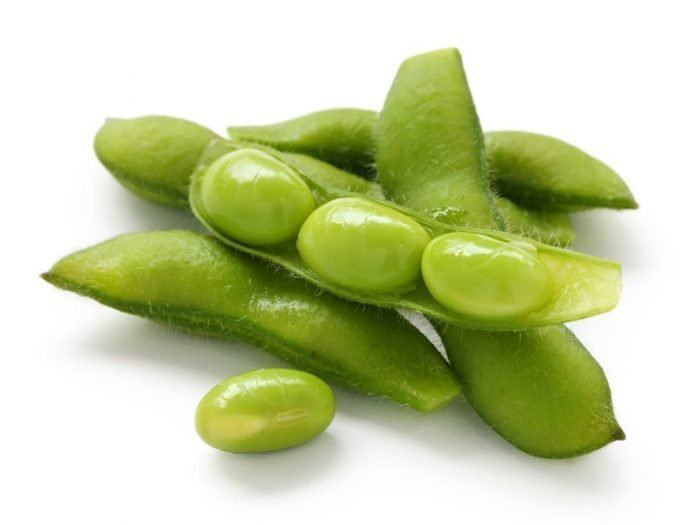
The Japanese name, edamame, is used commonly to refer to the dish. It literally means, "stem bean" (枝 eda = "branch" or "stem" + 豆 mame = "bean"), because the beans were often sold while still attached to the stem.
History
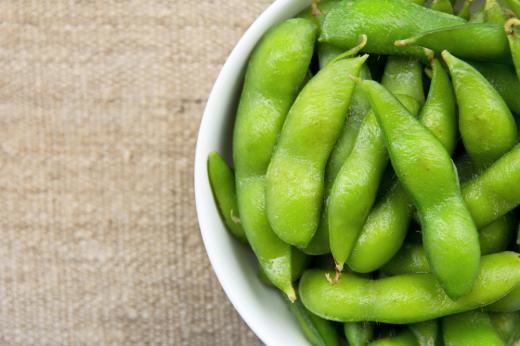
The earliest documented reference to the term "edamame" dates from the year 1275, when the Japanese monk Nichiren wrote a note thanking a parishioner for the gift of "edamame" he had left at the temple. In 1406 during the Ming Dynasty in China, the leaves of the soybeans were eaten and during outbreaks of famine, it was recommended for citizens to eat the beans whole or use them ground up and added to flour. Years later in China in 1620 they are referred to again, but as Maodou, which translates to the term “hairy bean”. They are found in the records of the Runan vegetable gardens and stated as having a medicinal purpose as well as being a snack type food. Edamame appeared in haikai verse in Japanese in the Edo period (1603 – 1868), with one example as early as 1638. They were first recognized in the United States in 1855 when a farmer commented on the difficulties he had shelling them after harvest. In March 1923, the immature soy bean is first referred to in text in the United States. In this book they are first pictured and shown as being eaten out of open shell pods. The first nutritional facts about them are published and some recipes are included as they were a new type of vegetable to the public. The earliest recorded usage in English of the word edamame is in 1951 in the journal Folklore Studies. Edamame appeared as a new term in the Oxford English Dictionary in 2003, and in the Merriam-Webster dictionary in 2008. In 2008, the first soybeans were grown in Europe to be sold in grocery stores as edamame and eaten as an alternative source of protein.
Harvesting
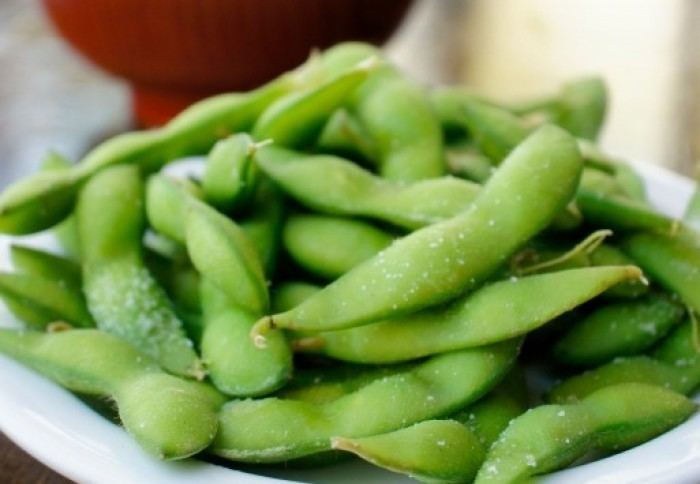
Edamame is typically harvested by hand to avoid damaging the crop's stems and leaves. Green soybean pods are picked before they fully ripen, typically 35 to 40 days after the crop first flowers. Soybeans harvested at this stage are sweeter because they contain more sucrose than soybeans picked later in the growing season. Other factors contributing to edamame's desirable flavor include free amino acids such as glutamic acid, aspartic acid, and alanine. Often these unbound amino acids decrease as the pods fully expand and ripen.
Cooking
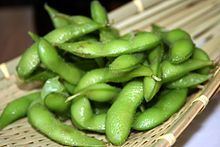
Pods may be boiled in water, steamed, or microwaved. The ends of the pod are sometimes cut before boiling or steaming. The most common preparations use salt for taste, either dissolved in the boiling water before introducing the soybean pods or added after cooking.
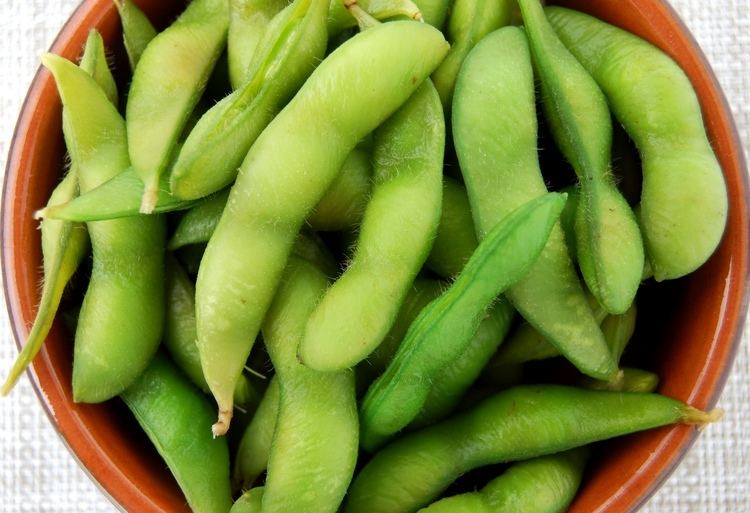
Edamame is a popular side dish at Japanese izakaya restaurants with local varieties being in demand, depending on the season. Salt and garlic are typical condiments for edamame. In Japan, a coarse salt wet with brine is preferred on beans eaten directly from the pod.
Storage
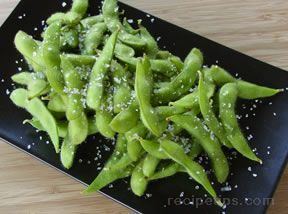
Edamame purchased fresh is preferably eaten the same day, with flavor degradation being noticeable in as few as 10 hours after harvest. However, edamame will stay edible for three days when stored in the refrigerator (i.e. if not already brown). Damaged pods brown more rapidly however, mainly due to the enzyme polyphenol oxidase. If stored fresh, the pods should be kept humid to prevent discoloration and wilting. This can be accomplished by wrapping the pods in plastic or another material which traps moisture.
Freezing fresh edamame is another option for maintaining good quality over a few months. Fresh edamame should be blanched first before being frozen.
Nutrient content
The United States Department of Agriculture states that edamame beans are, "a soybean that can be eaten fresh and are best known as a snack with a nutritional punch".
Edamame and other preparations of soybeans are rich in protein, dietary fiber, and micronutrients, particularly folate, manganese, phosphorus and vitamin K (table).
The balance of fatty acids in 100 grams of edamame is 361 mg of omega-3 fatty acids to 1794 mg of omega-6 fatty acids.
As a significant source of plant protein, edamame beans are under research to establish whether a relationship exists for soy consumption with reduction of disease risk.
